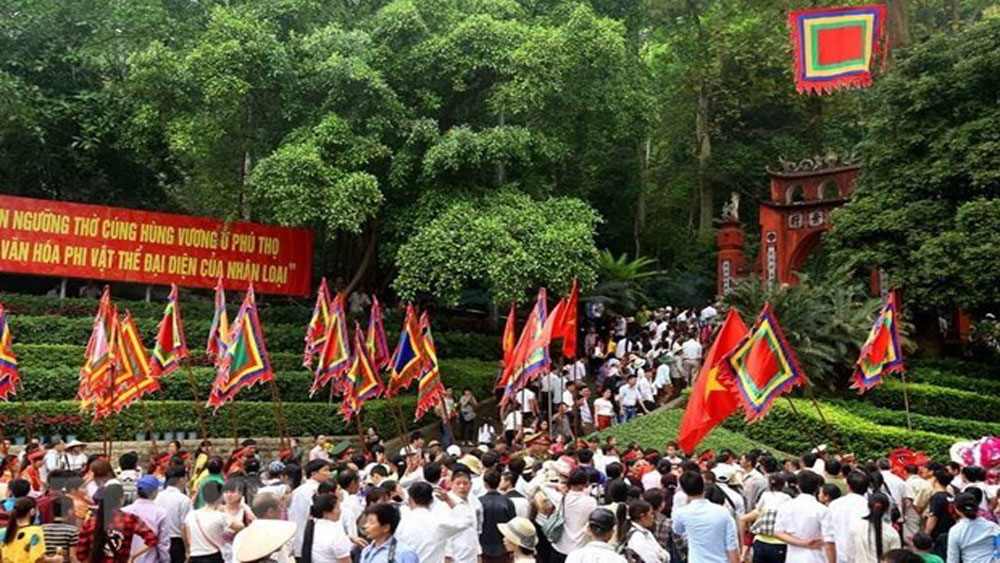Palanquin procession held at Hung Kings Temple Festival
|
|
The palanquins were carried from seven different localities – namely Chu Hoa, Hung Lo, Kim Duc, Van Phu, and Hy Cuong in Viet Tri city, and Tien Kien and Hung Son in Lam Thao district – to the Hung King Temple. This ritual has been maintained for thousands of years by the local people.
 |
|
The kieu (palanquin) procession at the Hung King Temple. |
The same day, 14 teams, comprised of 13 from cities and districts in Phu Tho, and one from the northern province of Hai Duong, competed in a chung and giay cake-making contest.
The winning team will make the chung and giay cakes as offerings to the Hung Kings, the legendary founders of the nation, on their death anniversary on the tenth day of the third lunar month.
Legend has it that Lac Long Quan (real name Sung Lam, son of Kinh Duong Vuong and Than Long Nu) married Au Co (the fairy daughter of De Lai). Au Co then went on to give birth to a pouch filled with one hundred eggs, which soon hatched into a hundred sons, believed to be Vietnam’s ancestors. However, soon thereafter, Lac Long Quan and Au Co separated. Lac Long Quan went to the coast with 50 of the children, while Au Co went to the highlands with the rest.
Their eldest son was made king, who named the country Van Lang and set up the capital in Phong Chau (nowadays Viet Tri city, Phu Tho province), beginning the 18 dynasties of the Hung Kings.
The kings chose Nghia Linh Mountain, the highest in the region, to perform rituals devoted to rice and sun deities to pray for healthy crops.
To honour their great contributions, a complex of temples dedicated to them was built on Nghia Linh Mountain, and the tenth day of the third lunar month serves as the national commemorative anniversary for the kings.
The worshipping rituals of the Hung Kings was recognised as a UNESCO Intangible Cultural Heritage of Humanity in 2012.
Source: VNA
 Bắc giang
Bắc giang














Reader's comments (0)